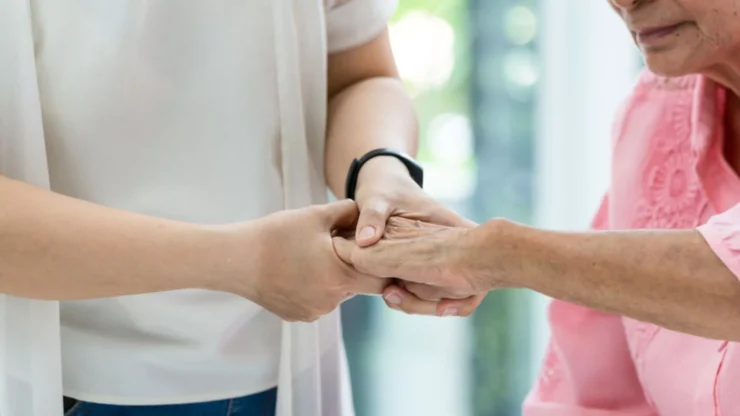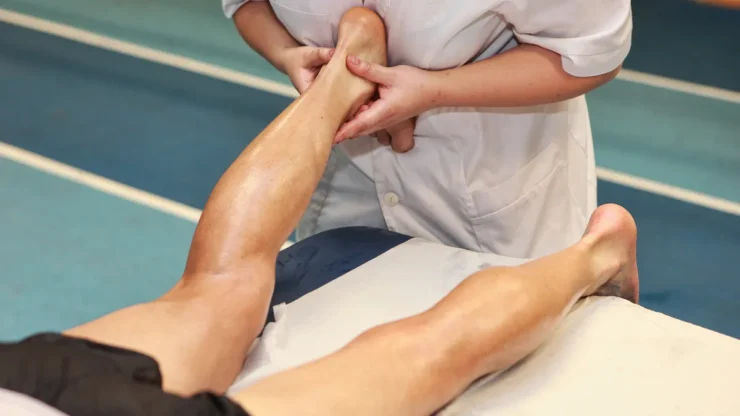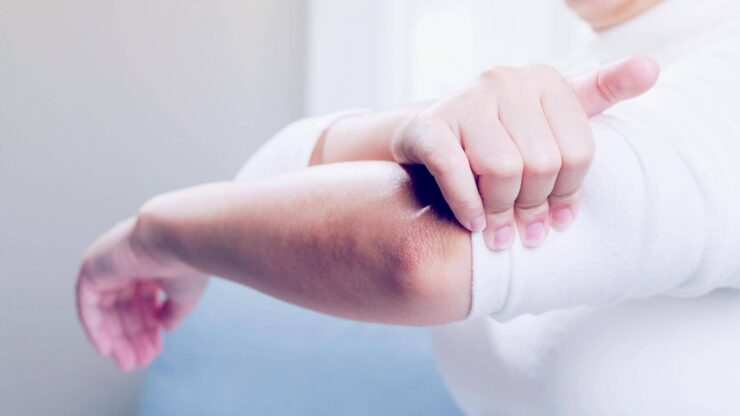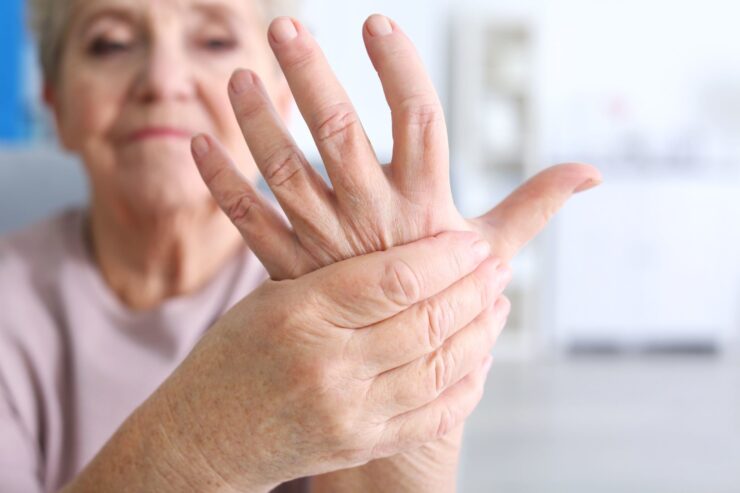Table of Contents
Arthritis is a condition that causes inflammation and stiffness in the joints, leading to pain and decreased mobility.
The two most common types are osteoarthritis, which results from wear and tear, and rheumatoid arthritis, an autoimmune disorder.
This condition significantly impacts the quality of life, making daily activities challenging. Massage therapy, a complementary treatment, can offer relief from arthritis symptoms.
Understanding Arthritis
Osteoarthritis is primarily caused by age-related wear and tear on the joints. Other contributing factors include joint injuries, obesity, and genetic predispositions. Symptoms of osteoarthritis include deep joint pain, stiffness, swelling, and a reduced range of motion.
The pain is often more pronounced after physical activity or at the end of the day. As the cartilage that cushions the ends of the bones deteriorates, bones may rub together, causing pain and swelling.
Rheumatoid arthritis is an autoimmune condition where the body’s immune system mistakenly attacks the joints, leading to inflammation. Causes include genetic factors, environmental triggers, and hormonal changes.
Symptoms are characterized by joint pain, swelling, stiffness, and fatigue. The stiffness is usually worse in the mornings or after periods of inactivity. Over time, rheumatoid arthritis can lead to joint deformity and loss of function.
Psoriatic arthritis affects some people who have psoriasis, a condition characterized by red patches of skin topped with silvery scales. Symptoms include skin inflammation, swollen fingers and toes (dactylitis), and joint pain.
It can affect any part of the body, including the spine, and symptoms can range from mild to severe. Psoriatic arthritis often alternates between flare-ups and periods of remission. Yeosu massage (여수마사지), with other treatments can provide a holistic approach to managing arthritis symptoms, improving the quality of life for those affected by this condition.
Benefits of Massage Therapy for Arthritis

Massage therapy offers numerous benefits for those suffering from arthritis. It provides significant pain relief and reduces stiffness, allowing individuals to move more freely and comfortably.
Improved blood circulation to the affected joints enhances nutrient and oxygen delivery, promoting healing and reducing inflammation. Massage also helps increase the range of motion and flexibility, making it easier to perform daily activities.
Moreover, massage therapy can significantly reduce stress and improve overall mood, which is crucial for managing chronic pain conditions. Enhanced relaxation and decreased anxiety levels contribute to a better quality of life.
Additionally, massage can improve sleep quality, which is often disrupted in people with arthritis due to pain and discomfort. By promoting relaxation and reducing pain, massage therapy helps individuals achieve more restful sleep.
Types of Massage Therapy for This Condition
Now let us take a look at the therapies that can help with this issue.
Moderate-Pressure
Moderate-pressure massage is effective in reducing pain and improving the range of motion in arthritis patients. This technique involves applying pressure that moves the skin without causing pain, helping to alleviate discomfort and enhance joint function.
Myofascial Release

Myofascial release targets tight connective tissues to reduce stiffness and pain. By applying gentle sustained pressure to the fascia, this technique helps release tension and improve mobility, making it beneficial for arthritis patients.
Swedish
Swedish massage uses long, gliding strokes to ease muscle tension and improve circulation. It is a gentle form of massage that can help reduce stress and promote relaxation, making it ideal for those with arthritis.
Deep Tissue
Deep tissue massage focuses on the deeper layers of muscle tissue. While it can be beneficial, it may not be suitable during arthritis flare-ups due to the intensity of the pressure applied. It is best used when the condition is stable.
Hot and Cold Stone
Hot and cold stone massage combines the use of heated stones to relax muscles and cold stones to reduce inflammation. This combination can provide significant relief from arthritis symptoms by addressing both muscle tension and joint inflammation.
Trigger Point Therapy
Trigger point therapy targets specific muscle knots that can cause pain. By applying pressure to these points, it helps relieve pain and improve function in the affected areas, offering relief for arthritis patients.
Research and Evidence

Numerous studies support the effectiveness of massage therapy in providing relief for arthritis symptoms. Research has shown that moderate-pressure massage can significantly reduce pain and improve joint function in individuals with arthritis.
For instance, a study published in the Journal of Alternative and Complementary Medicine found that participants who received moderate-pressure massage experienced reduced pain and improved grip strength.
Myofascial release and other massage techniques have also demonstrated benefits in reducing pain and enhancing mobility. Studies indicate that these methods can help decrease stiffness and improve the overall quality of life for arthritis patients.
For example, a study in the International Journal of Therapeutic Massage and Bodywork highlighted the positive effects of myofascial release on pain and function in individuals with arthritis.
The growing body of evidence underscores the potential of massage therapy as a valuable complementary treatment for arthritis, providing a non-pharmacological option for managing symptoms and improving well-being.
Practical Considerations
When considering massage therapy for arthritis, it is essential to find a qualified massage therapist with experience in treating this condition. Discussing treatment goals and pain levels with the therapist ensures that the sessions are tailored to individual needs. Clear communication helps the therapist adjust techniques and pressure to provide the most benefit without causing discomfort.
Hydration is crucial before and after massage sessions to help flush out toxins released during the massage and to keep tissues hydrated. Regular sessions, typically once or twice a week, can yield optimal results, but the frequency and duration should be adjusted based on individual responses and the severity of symptoms.
Self-Massage Techniques

Self-massage can be an effective way to manage arthritis pain between professional sessions. Using moderate pressure and long strokes, individuals can target specific areas to relieve discomfort. For example, gentle kneading and circular motions on the hands and fingers can help reduce stiffness and pain.
Warming up the area with a warm towel or taking a warm bath before self-massage can enhance effectiveness. It is essential to avoid excessive pressure to prevent further irritation or injury. Regular self-massage can complement professional treatments and provide ongoing relief from arthritis symptoms.
Complementary Treatments
Combining massage therapy with other treatments can enhance the overall management of arthritis symptoms. Techniques like red light therapy and infrared sauna can complement the benefits of massage by reducing inflammation and promoting healing. Red light therapy, for instance, uses low-level wavelengths to penetrate the skin and stimulate cellular repair and regeneration, providing pain relief and reducing joint stiffness.
A holistic approach that includes exercise, a balanced diet, and stress management can further improve outcomes. Regular physical activity helps maintain joint function and reduce stiffness, while a nutritious diet supports overall health. Stress management techniques, such as mindfulness and yoga, can help reduce the psychological burden of chronic pain.
The Bottom Line
Massage therapy offers significant benefits for arthritis relief, including pain reduction, improved joint function, and enhanced overall well-being. Consulting with healthcare providers before starting massage therapy is crucial to ensure it fits into a comprehensive arthritis management plan.

